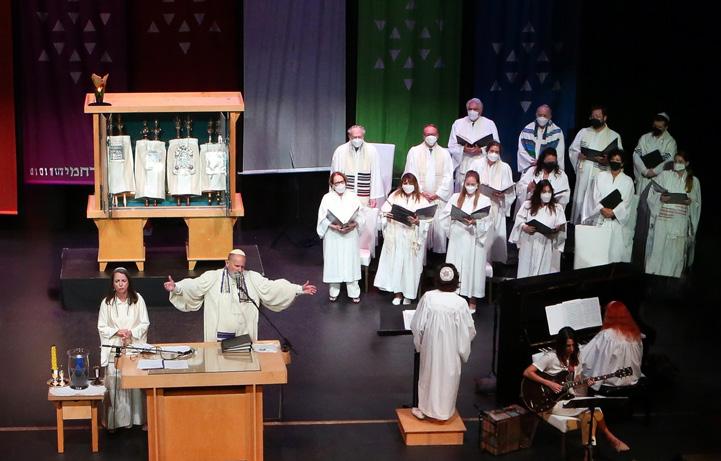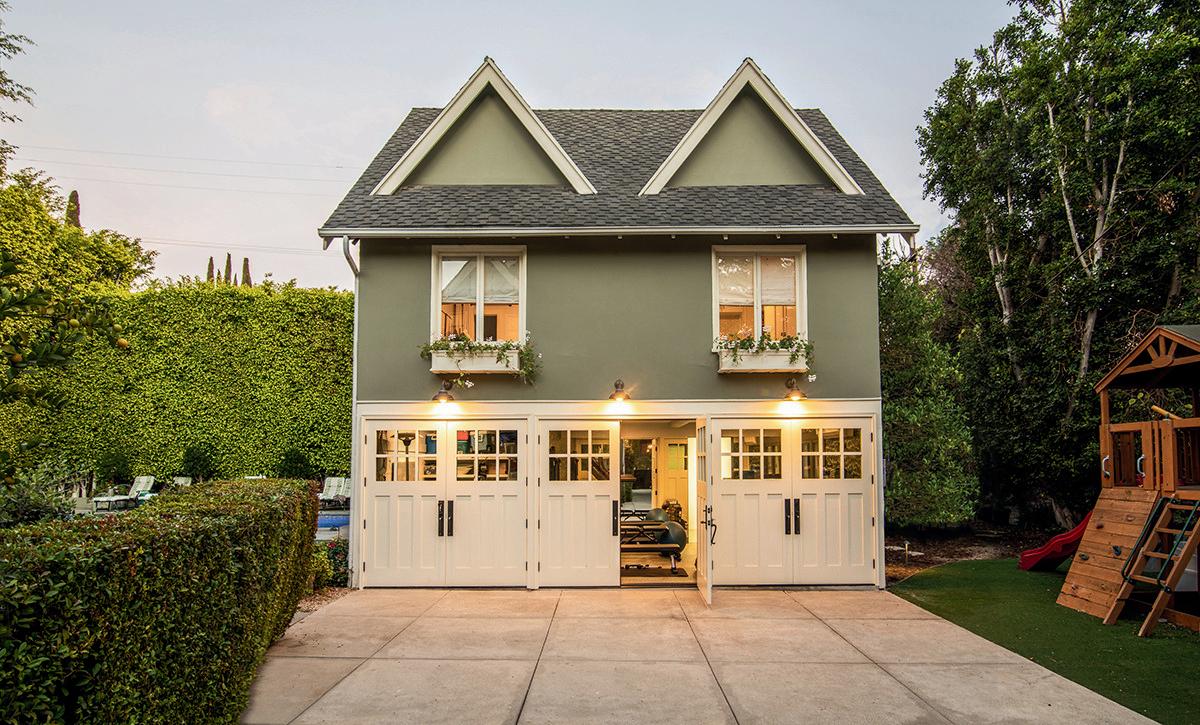




A Los Angeles man has been sentenced to 23 years and 8 months in state prison after being convicted of multiple felonies, including hate crimes and assault with a deadly weapon, stemming from incidents in Santa Monica and Los Angeles, according to the Santa Monica Police Department (SMPD).
The suspect, identified as Kevin Mumin, 37, was found guilty earlier this month of three counts of assault with a deadly weapon, with enhancements for great bodily injury and hate crimes, as well as one count of felony sexual battery. The charges relate to a series of unprovoked attacks, which targeted Hispanic victims in Santa Monica and Los Angeles.
The first incident occurred on August 20, 2023, when SMPD officers responded to an assault with a deadly weapon on the 3100 block of Main Street in Santa Monica. The victim, a Hispanic male, was struck from behind with a large wooden stick, sustaining a severe head injury. Surveillance footage captured the attack.
Two days later, on August 22, 2023, SMPD officers encountered another Hispanic male who had been the victim of an attempted assault with a deadly weapon in the 1400 block of Palisades Park. The suspect threw a glass bottle at the victim, a City of Santa Monica maintenance worker, after attempting to punch him.
SMPD detectives identified Mumin as the suspect in both cases, connecting him to a Los Angeles Police Department (LAPD) bulletin for similar hate crimes. Mumin, who is currently homeless, was arrested by LAPD on August 23, 2023, for multiple felony assaults.
Mumin’s criminal history includes arrests for robbery, burglary, assault with a deadly weapon, and other offenses.
The SMPD is asking anyone with

Initially launched in September 2023 with bi-weekly deployments, HoST was designed to address encampmentrelated waste and debris
The City of Santa Monica has expanded its Homeless Support Team (HoST) following the success of a pilot program aimed at maintaining the cleanliness of public spaces.
Initially launched in September 2023 with bi-weekly deployments, HoST
was designed to address encampmentrelated waste and debris across the city’s parks, beaches, and other public areas, as detailed in a City blog post by Custodial Services Administrator Jose “Jay” Aguilar.
The program, which initially relied on a contractor, has now been fully integrated into the city’s operations with an in-house team providing services five days a week.
The team proactively surveys neighborhoods to identify and clean up areas where waste has accumulated, focusing on known “hotspots”, the post stated. HoST also responds to complaints submitted through Santa Monica’s 311 system and collaborates closely with the Police Department’s Homeless Liaison Program (HLP) Team to clear waste from vacated encampments.
Since the in-house team began its work in May 2024, HoST has removed over 65 tons of debris, contributing to a total of more than 180 tons of waste collected citywide since the program’s inception,

according to the post. HoST operates under the Promenade Maintenance Division of the Public Works Department, with team members receiving specialized training in areas such as de-escalation, Narcan
administration, and safety protocols for encampment cleanups. The program is funded through Measure CS, a voterapproved initiative that raised the transient occupancy tax paid by visitors to Santa Monica hotels.
As an update, this reporter went to a local CVS pharmacy to get the updated version of the Covid 19 mRNA vaccine recently approved for usage by the Food and Drug Administration (FDA). Unfortunately, even with health insurance, the shot will not be free because the federal government has ended funding for Covid 19 vaccines, and most of the major health insurance companies will not cover the vaccine even though it is available. The charge for the new vaccine at CVS is $200.
The reason the CVS pharmacist gave me was that my insurance company, LA Care Health Plan, has not yet updated its database to include coverage of the
newest Covid 19 booster. I was informed that only Blue Shield and Medicare have updated their database to include the new booster as of today.
Unless you are insured with either of these plans, you will almost certainly have the same problem. It would be advisable to call your insurance company and check if and when they will cover this immunization. The seasonal flu shot was covered with no problem. It is alarming that during the biggest Covid surge in two years, when the United States has the largest death toll from Covid 19 in the world, insurance would not cover this vaccine, the Covid Bridge Program has effectively ended, and the government disseminated none of this information with the release of the vaccine. The current U.S. Covid death toll is 2.8K as of August 11, 2024.
When I spoke with a customer service representative at LA Care, they informed me that the insurance plan’s database would not be updated until September 5, when the new vaccine will be covered. I spoke with a company press representative and am waiting for a response from LA Care.






















The Santa Monica woman accused of attempting to kidnap an 8-year-old girl and assaulting a man with a knife last week has had her bail set at $135,000 and faces a potential six-and-a-half year prison sentence, according to the Los Angeles County District Attorney’s office.
Courtney Perrone, 39, was charged with one count of attempted kidnapping of a victim under 14 years old, one
count of false imprisonment by violence, and one count of assault with a deadly weapon following the incident on August 21. Perrone allegedly tried to wrestle the child away from a neighbor before fleeing the scene, only to be found later in a nearby grocery store parking lot, as reported by ABC7.
During her arraignment, Perrone pleaded not guilty, and her defense attorney declared a doubt as to her competency, prompting the suspension of criminal proceedings pending a mental health evaluation.
The next court hearing is scheduled for September 9 at the Hollywood Courthouse.
If convicted, Perrone could face up to six and a half years in prison. The Santa Monica Police Department, which is investigating the case, noted that Perrone has prior out-of-state arrests and was recently released by the LAPD for insufficient evidence in a separate case.
1 OF 2 DISPENSARY IN SANTA MONICA
SANTA MONICA COMMUNITY: LOCAL-ONLY DEALS AWAIT
Santa Monica, CA – In an effort to bring our vibrant community closer together, we are thrilled to announce a series of exclusive localonly deals designed specifically for Santa Monica residents. These deals aim to celebrate our community, support local businesses, and offer unique benefits to those who call Santa Monica home.


BUILDING A STRONGER & SAFER SANTA MONICA TOGETHER
In today’s fast-paced world, community importance is often overlooked. In Santa Monica, our spirit thrives through local efforts. Enjoy exclusive deals, support the local economy, and trust our California-compliant, clean products. Choose local, invest in our flourishing community! Together, we can make a difference.
Trust our commitment to quality and community, celebrate milestones that define our journey; at Harvest of Santa Monica, blending integrity with innovation, offering products reflecting dedication to excellence and well-being, each interaction and deal a brushstroke on the canvas of our thriving community— embrace our shared adventure, face the future with confidence, and remember: We’ve got this! Believe in our community's power to craft a story of success, growth, and togetherness.
Santa Monica Architects for a Responsible Tomorrow
Affordability: An Income and Available Asset Gap Issue, Not a Supply Issue
(Last week’s article revealed how state mandates became a tool for gentrification. Now, we will review the falsehood on the state’s housing supply mandate.)
In the ongoing saga of California’s housing crisis, we’re witnessing a classic case of good intentions paving the road to economic hell. The state’s approach to solving its affordability problem is a textbook example of how simplistic supply-side solutions can not only fail to address complex economic issues but potentially exacerbate them.
Let’s start with some basic economics. The conventional wisdom – championed by state legislators and enshrined in policies like SB 35 (which streamlines approval for infill developments) and the potential SB 7 (aimed at reinforcing the Builder’s Remedy), is that California’s housing affordability crisis is primarily a supply problem. The logic seems straightforward: increase housing supply, and


prices will fall. It’s Econ 101, right?
Wrong. This simplistic view ignores the complexities of real-world housing markets and the fundamental nature of California’s affordability crisis. What we’re dealing with here isn’t just a supply shortage; it’s a profound mismatch between housing costs and incomes, exacerbated by growing inequality. A University of Kansas analysis suggests, “We cannot build our way to housing affordability. We need to address price levels and income levels to help lowincome households afford existing housing, rather than increasing supply in the hope that prices will subside.” 8
Consider the case of Sarasota, a small Silicon Valley town where house prices surged nearly 50% from 2019 to 2024. This wasn’t driven by a sudden population boom or a drastic reduction in housing supply. Instead, it was the result of increased purchasing power among tech workers, fueled by stock options that have widened the gap between the tech elite and everyone else.9
This phenomenon highlights that in many California housing markets, we’re not seeing more people competing for the same number of homes. Instead, we’re seeing the same number of people competing for homes but with vastly unequal resources. The majority
of this runup is in single-family houses, which is not part of any RHNA building paradigm. In fact, RHNA seeks to reduce the supply of single-family housing by focusing on densification, typically known as “infill” development. This exemplifies why RHNA fails to address the root cause of the affordability crisis: growing income inequality. Therefore, in their misapplication
of supply-side concepts, they are actually making the affordability problem worse.10
The Myth of Supply-Side Solutions:
The RHNA process focuses primarily on overall unit production rather than affordability and thereby inadvertently promotes gentrification. How? By incentivizing the construction of market-rate units that cater to higher-income residents




while not addressing the needs of middle and lower-income households. Developers will build to meet investment-required price levels and stop when prices start declining from that point. They’re not in the business of flooding the market until prices drop; they’re in the business of maximizing returns. This means that simply increasing supply won’t necessarily lead to lower prices, especially if that new supply is primarily targeting higherincome demographics.11
Adding to this complex picture is the growing influence of algorithmic pricing in the rental market. This software trend towards data-driven, centralized pricesetting undermines the very free-market principles that supply-side advocates claim to champion.12 In other words, the RHNA process depends on and takes advantage of
the very gentrification that its “affordable housing” narrative purports to combat. If gentrification (i.e., rising prices) were to stop, construction under RHNA would effectively cease, revealing the inherent contradiction in the current approach.13
The Invisible Hand of Gentrification:
The gentrification driven by RHNA is largely obscured in official state and city reporting. While the state focuses on the number of affordable units produced, it overlooks the vast number of market-rate units that accompany them. These marketrate units, not formally mandated but a direct outcome of the RHNA construct, are the true engines of gentrification. They are largely absent from housing element analyses and related environmental impact reports (which are omitted by RHNA mandates).

Furthermore, cities and counties do not assess gentrification as a housing issue for their residents, further obscuring its impact.
Rethinking Our Approach to Affordability:
On paper, the Regional Housing Needs Allocation (RHNA) process is a wellintentioned attempt to ensure adequate housing production across the state. In practice, however, it’s become a Rube Goldberg machine of unintended consequences. So, what’s the solution?
First, we need to recognize that addressing income inequality is at least as important as increasing housing supply. This means focusing on policies that boost incomes at the lower end of the spectrum and create more middle-income jobs.
Second, we need a more nuanced approach to housing policy. Instead of blanket upzoning and streamlined approvals, we should be looking at targeted interventions that specifically address the needs of different income levels. This might include stronger protections for existing affordable housing, incentives for the construction of middleincome housing, and creative approaches to public housing.
Third, we need to rethink how we finance and incentivize affordable housing development. One intriguing idea is to redistribute the increased property tax proceeds from infill redevelopment projects, giving cities a greater share to fund infrastructure, services, and affordable housing. This could create a virtuous cycle where development actually helps to mitigate its own negative impacts.
Lastly, we need to be honest about the trade-offs involved in our housing policies. The current approach, which essentially uses market-rate development to cross-subsidize a small number of affordable units, may be doing more to drive gentrification than to solve the affordability crisis.
the community. Without a fundamental shift in our approach to housing policy, we may find that in our rush to build more, we’ve built a future that’s less affordable, less diverse, and less livable for all but the most affluent Californians.
It’s time for California citizens to require their legislators to take a hard look at whether its current housing policies are doing more harm than good.
FOOTNOTES:
8 - Department of Urban Planning, University of Kansas 01-14-2024 https:// phys.org/news/2024-06-housing-shortage. html
9 – The San Francisco Chronicle article, “What does Nvidia’s meteoric stock rise mean for Silicon Valley home prices?” (07/28/24), 10 - California Budget & Policy Center Report “California’s Housing Affordability Crisis: The Widening Gap Between Incomes and Housing Costs”, 2021
11 - Urban Studies Journal Article: Title: “Supply Skepticism: Housing Supply and Affordability”
Authors: Rodda, A., Yip, C., & Himel, S., 2020
12 – “We’re Entering an AI Price-Fixing Dystopia,” by Roge Karma, The Atlantic, August 10, 2024.
13 - MIT Research:
Title: “Filtering and Housing Affordability: Theory and Evidence”
Authors: Been, V., Ellen, I. G., & O’Regan, K., 2019
14 - The California Housing Partnership advocates a combination of increased affordable housing production, preservation of existing affordable units, and expanded rental assistance programs.



Conclusion:
California’s housing crisis is a complex problem that defies simple solutions. What’s needed is a comprehensive approach that addresses income inequality, targets housing production to specific needs, and isn’t afraid to challenge conventional economic wisdom when it fails to match reality. We need to embrace the complexities of community planning, household finances, and housing markets and prioritize the needs of those most affected by this crisis, each resident, and each household within our community.14,15
The stakes are high. As Santa Monica residents brace for a wave of new high-rise developments, the question isn’t just about how the towers will change the city’s skyline but whether they’ll change the very nature of
15 - Research from the Urban Institute suggests preservation of existing affordable housing and community stabilization efforts can be more effective in maintaining affordability than new construction alone. Jack Hillbrand AIA, Architect and Guest Writer for SMa.r.t.
Send comments to santamonicasmart@ gmail.com
Santa Monica Architects for a Responsible Tomorrow
Mario Fonda-Bonardi AIA; Robert H. Taylor AIA, Architect; Dan Jansenson, Architect & Building and Fire-Life Safety Commission; Thane Roberts, Architect; Samuel Tolkin Architect & Planning Commissioner; Michael Jolly, AIR-CRE; Marie Standing, Resident; Jack Hillbrand AIA,Architect
For previous articles, see www. santamonicaarch.wordpress.com/writing


In June this year, Santa Monica’s beloved oceanfront amusement park welcomed a brand-new eating experience to the Pier. “Snackville”, the brainchild of the late Michelin starred chef James Kent, opened to much fanfare on June 7, treating patrons to iconic Americana fare taken up a notch.
Ferris wheels and screams of delight may not be normally associated with fine dining, but fans of the park’s former food options shouldn’t worry. Snackville retains the Pier’s original concession stand format and serves up all your favorite treats of yesteryear: think burgers, fries, hotdogs, and of course funnel cakes.
And while the fare is familiar and accessible, it’s also elevated. In overseeing the new venture, Kent, who tragically passed away last month, leaned on his vast experience in the high-stakes restaurant world. His goal to keep things simple and do them exceptionally well is evident in the five new stands he created: Smashie’s Burgers, Mr. Nice Fry, Churrita Churro, Cosmic Funnel Cakes and Scoops Creamery.
Kent saw Snackville as a chance to try new things and have fun. He even introduced a host of charming Snackville characters as mascots; the jaunty cartoon burger and a long-lashed churro with high heels recall 1950s concession-stand advertising.
In real life, these characters are as delicious as expected. The centerpiece of Snackville is Smashie’s Burgers, serving a finely-honed version of the popular smash burger. Ground beef is smashed into the hot griddle to deliver maximum crust and maximum flavor, before being topped with American cheese, grilled onions
and special “Smashie Sauce” to create a juicy, drippy taste sensation. The stand also offers loaded hot dogs and fries.
If it’s a fun twist on fried potatoes you’re after, try Mr. Nice Fry, which offers several beautifully crispy fry varieties including “Skinny Dippers,” “Swirly Fries” and “Tater Wheels,” all served with tasty dipping sauces and seasonings. Plus, from inside Mr. Nice Fry you can order an eegee, the famous Arizonan beverage made from real fruit. This slushie-like frozen treat has been a summer staple in Arizona since 1971, and now makes its delightful Los Angeles debut — sure to be a calling card for the curious and thirsty alike.
Then of course there’s dessert. The classic boardwalk treat, the funnel cake, can be found in all its glory at both Cosmic Funnel Cakes and Scoops Creamery, so there’s no excuse to miss out. Made by pouring batter through a funnel into hot oil, the cakes have a distinct airy, crispy texture and can be topped with fresh fruit and whipped cream or just a dusting of powdered sugar for the purists.
At Scoops Creamery (no relation to the Highland Park store) you can enjoy a scoop of gorgeous Lappert’s ice cream in flavors like Hawaiian Sea Salt Caramel and Lemon Creamsicle, as well as milkshakes and sundaes. But leave room for the churros at Churrita’s: a levelled-up version filled with dulce de leche, dipped in chocolate, or just coated in classic cinnamon-sugar with vanilla soft-serve to dunk.
The opening of Snackville adds a new level of attraction to Pacific Park, a popular tourist spot that already brings in an estimated 12 million visitors annually.

The Park is expected to get more upgrades over the next five years, with investment company SC Holdings putting some $10 million in the project.
It was SC Holding’s partnership with celebrated chef James Kent that led to Snackville’s conception. Chef Kent honed his skills at renowned kitchens like Babbo and Jean-Georges before joining Eleven Madison Park in New York City, leading the restaurant to three Michelin stars. Kent then went on to launch two Michelinstarred restaurants of his own—Crown
The Encampment, Located on a Large Stretch of the Beach near Los Angeles International Airport, Had Reportedly Grown in Recent Weeks
A homeless encampment at Dockweiler State Beach in Playa del Rey was cleared on Thursday following complaints from local residents about deteriorating conditions, according to multiple reports.
The encampment, located on a large stretch of the beach near Los Angeles International Airport, had reportedly grown in recent weeks, with residents citing health and safety concerns due to garbage, hypodermic needles, and open fires.
The operation comes more than a month after California Governor Gavin Newsom threatened to cut state funding for counties that fail to address the homelessness crisis effectively, as reported by The Los Angeles
Times. Dockweiler Beach, which falls under multiple jurisdictions—including the state park system, Los Angeles County, and the City of Los Angeles—had seen little action from any of these entities, frustrating local residents. Under a 1975 agreement, the County is responsible for providing custodial maintenance and lifeguard services at Dockweiler, while the City is responsible for code enforcement and other policing, according to a spokesperson with the County Department of Beaches and Harbors.
Councilmember Traci Park’s office coordinated the cleanup with the Coastal CARE+ Team, as reported by ABC 7 Los Angeles.
Shy and SAGA, both in New York’s financial district—and formed Saga Hospitality Group with SC Holdings.
And while the restaurants James Kent founded sit firmly in the fine dining world, Kent himself was no stranger to the fun of the concession stand. In September last year the award-winning restauranteur slung chicken sandwiches and toffee pudding for the lucky punters at the US Open in New York.
Chef Kent passed away of a heart attack at age 45 on June 12.

Approximately 50 to 60 people were displaced by the cleanup, according to FOX 11 Los Angeles. Bulldozers and sanitation workers removed four truckloads of debris from the site.
The operation reflects a more aggressive stance by state and local authorities following a recent Supreme Court ruling that allows cities to enforce bans on sleeping or camping in public spaces, even when shelter space is insufficient. Newsom’s executive order directed state agencies to urgently address dangerous encampments and warned counties of potential funding cuts if they fail to act.


By Susan Payne
Kehillat Israel, a Reconstructionist
Congregation in the Pacific Palisades, is inviting Jewish families in Los Angeles to celebrate the upcoming High Holy days.
A natural extension of the congregation’s permanent location in the Pacific Palisades, KI invites unaffiliated Jewish families from the West Side to join the celebrations of Rosh Hashanah, the Jewish New Year, and Yom Kippur, the day of atonement, in Santa Monica.
During High Holy Days, KI also hosts a robust food drive, collecting enough food
to fill an entire warehouse of the Westside Food Bank.
In Jewish culture, Rosh Hashanah and Yom Kippur are two of the holiest days of the year. This year, KI is celebrating at the Pacific Palisades location and the Barnum Hall at Santa Monica High School, the latter of which is opened to ticketed noncongregants.
Service details include the following at Santa Monica High School’s Barnum Hall, 600 Olympic Boulevard, Santa Monica, CA, 90405:
• Erev Rosh Hashanah — October 2, 7:30 p.m.
• Rosh Hashanah — October 3, 10 a.m.
• Kol Nidre — October 11, 7:30 p.m.
• Yom Kippur — October 12, 10 a.m. service; 4 p.m. Mincha; 4:30 p.m. guest speaker program; 5 p.m. Yizkor and 5:30 p.m. Ne’ilah
For these holidays, it’s important for Jewish people to gather and convene,
even if they don’t regularly attend services throughout the year. Given the circumstances of the devastating Oct. 7, 2023 attack on Israel, and the antisemitism that has increased globally, gathering is especially important.
“People need more than ever to gather in places they feel safe and to be together, it’s been a really hard year. There’s been a lot of antisemitism across the country and on school campuses that has disrupted our sense of belonging, safety and security. But gathering gives us a sense that you’re not alone, our young people aren’t alone,” said Senior Rabbi Amy Bernstein.
On September 28 at 8 p.m., families are invited to celebrate Selichot and join the clergy under the stars at the Kehillat ¬Israel Courtyard for a night of introspection and care for the soul ahead of Holy Days.
High Holy Days on the Hill, celebrating Erev Rosh Hashanah will take place on October 2 at Founder’s Meadow at St. Matthew’s, 1031 Bienveneda Ave, Pacific

Palisades, at 5 p.m. Guests are invited to bring their own picnic for a family-friendly service. Additionally, families are invited to celebrate Tashlich, on October 3 at 5 p.m., at Will Rogers State Beach, for a bring-your-own picnic dinner and Shofar Blast at 5:30 p.m.
While much is planned in celebrating the High Holy Days, KI is looking forward to welcoming anyone who wants to be part of a warm and dynamic spiritual Jewish community.
A list of services that will be livestreamed are detailed on that website. Links and technical support will be distributed via email and available on KI’s website leading up to the High Holy Days.
For more information on the food drives, ticketing, and services, visit https://www. ourki.org/hhd.
A community coalition, Defend Ballona Wetlands, has filed a lawsuit in Los Angeles
County Superior Court challenging the California Coastal Commission’s recent approval of a SoCalGas project at the Ballona Wetlands State Ecological Reserve.
The lawsuit, filed by environmental attorney Jamie T. Hall of Channel Law Group, argues that the July 12th approval violates state environmental laws by allowing activities that will destroy sensitive wetland habitats crucial to endangered bird species.
Representatives from the Commission declined to comment, as they don’t “comment on pending litigation.”
The project, approved by the California Coastal Commission, permits SoCalGas
to conduct mechanical integrity testing and potentially abandon two natural gas wells within the reserve. According to a report from Patch.com, the project might be necessary to comply with California Department of Conservation’s Geologic Energy Management Division (CalGEM) regulations. CalGEM identified the wells as potentially compromised, requiring immediate action to prevent gas leaks. The Coastal Commission’s approval, however, has faced significant opposition due to concerns about its environmental impact, particularly on the endangered Belding’s Savannah Sparrow.
Defend Ballona Wetlands argue that
Support for the Dune Project Is Buoyed by the Success of a Similar One Right
By Zach Armstrong
The Venice Neighborhood Council recently approved the creation of nine sand dunes on Venice Beach, a project aimed at protecting against erosion and sea level rise, enriching the ecosystem, and providing habitats for endangered species.
The project, which will be located between Sunset and Brooks Avenues and extend to the seashore, is in partnership with the L.A. County Department of Beaches and Harbors. It is funded by a federal grant and administered by The Bay Foundation, while the Venice Oceanarium is a subcontractor.
The formation of the dunes will begin by marking off the area with informative signs about the reserve and plant protection. Then, dune sunflower seeds will be spread about; some of which will sprout to eventually become small native bushes. As those bushes grow larger, more and more windblown sand will collect and thus, the dunes are established.
The mounds will also foster an enhanced ecosystem.
Once the plants have sprouted, birds will
gather to feed on them and the insects they attract. The birds poop on the sand. This provides essential minerals for meiofauna (animals that live in the sand itself). Worms and crabs feed on the meiofauna, and then the fish eat the worms and crabs.
By creating a buffer between the ocean and what lies beyond the sand, the dunes will play an essential role in protecting against impending sea level rise. “Without the dunes, [Venice Beach] it’ll be a mess over the next ten to fifteen years. The ocean is rising very faster than anybody originally anticipated,” said Venice Oceanarium founder Tim Rudnick.
The low-lying berms won’t disrupt emergency vehicle access or the bike path, according to a brochure of the project.
Support for the dune project is buoyed

the Commission failed to consider less damaging alternatives to the project, which they say could have preserved the wetlands’ delicate ecosystem. The lawsuit alleges that the project’s approval violates the California Environmental Quality Act and the California Coastal Act, both of which mandate the protection of Environmentally Sensitive Habitat Areas (ESHA).

by the success of a similar one right next door.
In March, Santa Monica began moving forward on its second dune restoration project, also coordinated by The Bay Foundation. In 2015, the first Santa Monica restoration project was initiated, creating dunes which now span three acres and are approximately 4 feet tall.
The production process will likely begin around October in order to take advantage of the rainy season, which would help produce an optimal amount of plants, according to Rudnick. The project awaits a green light from the California Coastal Commission, which, according to Rudnick, is expected to approve it “quickly and swiftly,”
ZipRecruiter, Inc. seeks Software Engineer III in Santa Monica, CA to leverage technical exp to dzn, implmnt, test, & deploy comp prog to meet the needs of bus. & customers.
Reqs. Bachelors deg or foreign equiv in App Math, Comp Sci or rel. field. Coursework must incl. Operating Systems; Data Sci; Sftwre Security Exploitation; Compilers & Prog Analysis; Distributed Comp Syst; & DB Mgmt Syst. Posn will be hqd in Santa Monica, CA but is a telecommute posn, allowing for remote employ from various unanticipated worksites to the U.S. Salary fr. $120,000 to $162,500/yr. Email resume: immigration@ziprecruiter.com


SUPERIOR COURT OF CALIFORNIA COUNTY OF LOS ANGELES ORDER TO SHOW CAUSE FOR CHANGE OF NAME Case No. 24MCP00394
Superior Court of California, County of Los Angeles 1725 Main St. | Santa Monica, CA 90401
Petition of: Anna Madelene Larsdotter Shah by and through Anna Madelene Larsdotter Shah for change of name. ORDER TO SHOW CAUSE FOR CHANGE OF NAME
To all interested persons: Anna Madelene Larsdotter Shah
Petitioner: filed a petition with this court for a decree changing names as follows: a. Anna Medelene Larsdotter Shah to Madelene Shah
The court orders that all persons interested in this matter appear before this court at the hearing indicated below to show cause, if any, why the petition for change of name should not be granted. Any person objecting to the name changes described above must file a written objection that includes the reasons for the objection at least two court days before the matter is scheduled to be heard and must appear at the hearing to show cause why the petition should not be granted. If no written objection is timely filed, the court may grant the petition without a hearing.
NOTICE OF HEARING: Date: 10/11/24 | Time: 8:30AM | Dept: K A copy of this ORDER to SHOW CAUSE shall be published at least once a week for four successive weeks prior to the date set for hearing on the petition in the following newspaper of general circulation, printed in this county: SANTA MONICA MIRROR | Dated: Jan 3, 2024 Judge Lawrence Cho Published: 08/09/24, 08/16/24, 08/23/2024, and 08/30//2024




By Zach Armstrong
Mr. Charlies, the California fast food franchise which offers plant-based and satirical iterations of McDonald’s menu items, has closed its Venice Beach storefront along Ocean Front Walk.
The shuttering comes approximately one year after the outpost—the third Mr Charlie’s location after San Francisco
and it’s first L.A. spot on La Brea Ave.— opened for service. “Venice Beach just got weirder,” announced the company via an August 2023 Instagram post.
Now, the location’s windows are sealed up, the paint of its yellow frown logo has been wiped off the edifice and two “Available for Lease” signs are posted up.
Representatives from the franchise did not immediately respond to inquiry from Mirror Media Group.
Mr. Charlie’s aims to “redefine fast food” by addressing serious issues in a not-soserious and sarcastic fashion.
Menu items mock those of McDonald’s, including the “Big Chuck”, the “Not a Hamburger”, the “Not a Cheeseburger”, the “Double Not”, the “Not a Chicken Sandwich”, the “Not Chicken Nuggets”, and the “British Chips (Just fries)”. Its take on the Happy Meal is the “Frowny”, a choice of Not a Hamburger, Not a Cheeseburger, Double Not, Not a Chicken Sandwich or BigChuck, with 4 nuggets, fries & drink;


or the “Mini Frowny”, a choice of Not a Hamburger, Not a Cheeseburger, with 2 nuggets, mini fries and drink.
The chain is also community-driven, on account of employing people who need a second chance but have been “overlooked by a broken system.” It partnered with the Dream Center to give opportunities to those transitioning from homelessness, incarceration or addiction.
The company previously announced plans for overseas expansion in Australia, New Zealand, and Singapore.








